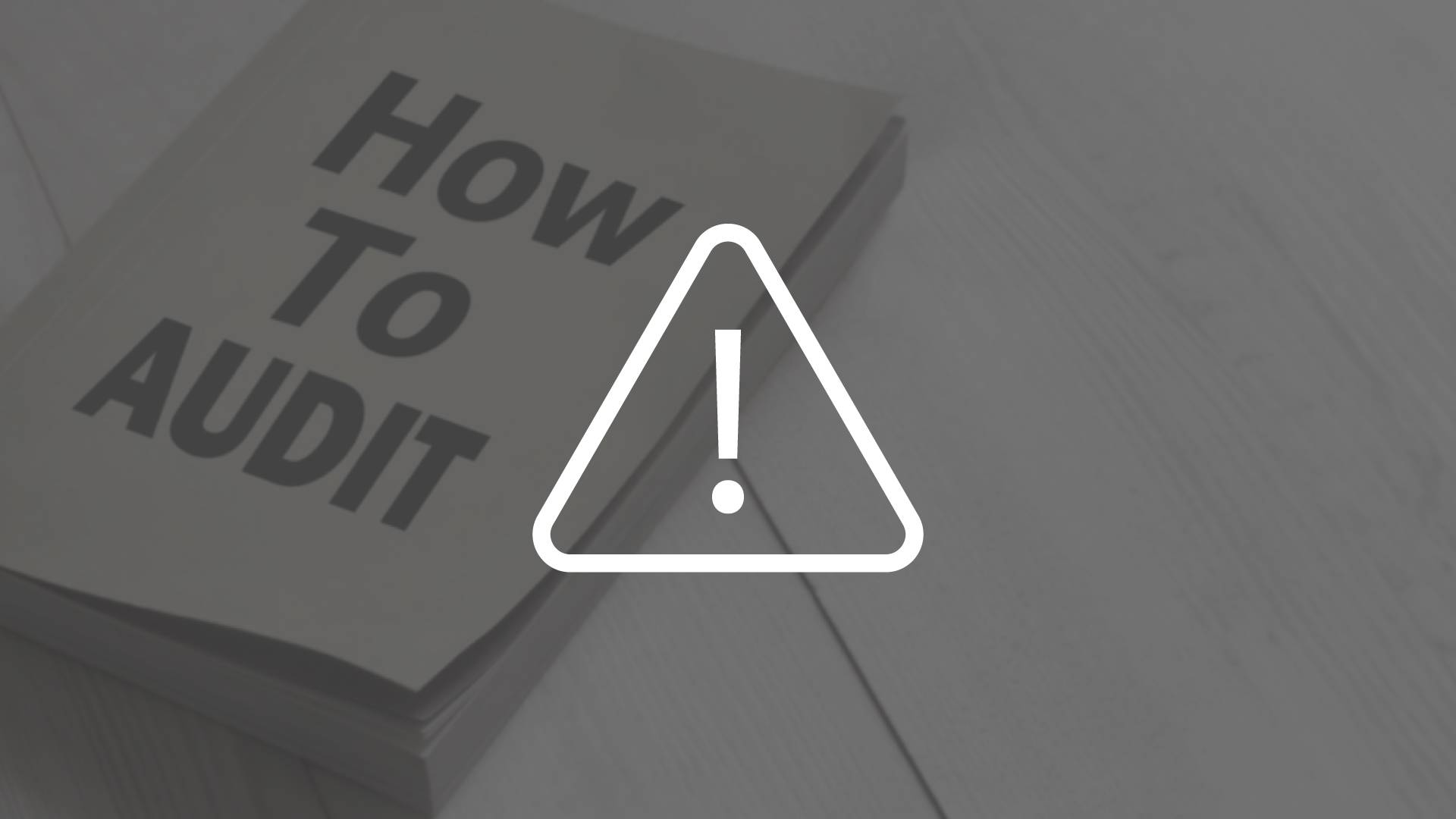Self-Study
Streamlining Small Audits: Quality plus Profitability
Streamline small business audits for minimizing cost and risk.

$261.00 – $291.00
Webcasts are available for viewing Monday – Saturday, 8am – 8pm ET.
Without FlexCast, you must start with enough time to finish. (1 Hr/Credit)
Please fill out the form below and we will reach out as soon as possible.
CPE Credits
9 Credits: Auditing
Course Level
Basic
Format
Self-Study
Course Description
High quality and efficiency are the basic objectives for audit engagements of all sizes. However for small companies, the costs and time associated with an audit can be daunting, if not completely overwhelming. But they don’t have to be. The key is creating a process that minimizes cost and risk, while maximizing profitability. The goal of this audit CPE course is simple: to help you create a strategy for small audits that includes compliance with applicable Clarified Auditing Standards published by the Auditing Standards Board (ASB) and, at the same time, is effective and lucrative.
Learning Objectives
Upon successful completion of this course, participants will be able to:
Chapter 1
- Recognize the philosophies underlying cost-beneficial audit strategies for audits of small- to medium-size entities.
- Identify the components of designing audit strategies for small audits that will comply with all applicable professional standards and achieve high levels of profitability.
- Recognize performance measures and documentation requirements for auditing procedures that result in both quality and efficiency.
- Recognize components and characteristics of audit risk, materiality calculations, and sampling decisions.
- Identify appropriate engagement completion procedures.
Chapter 2
- Identify the quality control policies and procedures that comply with the AICPA’s Code of Professional Conduct and the Statement on Quality Control Standards No. 8, A Firm’s System of Quality Control (Redrafted) (QC 10).
- Recognize the components of the AICPA Practice Aid Establishing and Maintaining a System of Quality Control for a CPA Firm’s Accounting and Auditing Practice (Practice Aid), the AICPA Conceptual Framework for Independence Standards, a Guide for Complying with Rules 102-105 (integrated into the AICPA’s updated Code of Professional Conduct),and AICPA Instructions for Quality Control Materials Reviews.
- Identify when independence is required, potential impairments to independence, threats to rules violations, and preventative safeguards.
- Recognize factors that affect risk at the financial statement level and their impact on the planning process.
- Recognize when a CPA firm is responsible for establishing and maintaining a system of quality control over the development of quality control materials and what modifications can be made to established practice aids.
Chapter 3
- Recognize factors that influence the control environment and which entities are at risk from an ineffective control environment.
- Recognize audit risks for certain financial statement classifications and when an auditor can reduce overall evidence requirements based on assessed levels of risk of material misstatement.
- Identify the components that comprise risk of material misstatement in order to understand when to perform and document risk assessment procedures.
- Recognize the definition of assertions and key cost-beneficial audit strategies for small audits.
- Identify factors that influence audit responses to potential risks of material misstatement.
Chapter 4
- Recognize components of an audit plan as required by auditing and quality control standards.
- Identify the steps of audit planning that prioritize the purposes and substance of engagement planning first and the procedures and documentation second.
- Recognize the importance of engagement planning activities in promoting audit efficiency and profitability.
- Recognize the importance of a standardized planning document in planning and organizing audit documentation before beginning the work.
- Recognize the purpose of an engagement letter and how it should be incorporated throughout an engagement.
Chapter 5
- Recognize the history and evolution of the components of internal control.
- Identify key controls at the entity level and the activity level.
- Recognize the use of internal controls based on the nature, size, and complexity of an entity.
- Identify the purpose of flowchart documentation for accounting and internal control systems.
- Recognize the importance and critical elements of analyzing and documenting control deficiencies on small audits.
Chapter 6
- Recognize key elements and requirements of the risk assessment standards.
- Identify cost-beneficial audit strategies that an auditor must consider to maximize planning efficiency.
- Recognize what comprises a financial statement assertion and how to tailor audit objectives to relevant financial statement assertions.
Chapter 7
- Recognize the definitions, use, and impact of planning materiality, tolerable misstatement (performance materiality), and the lower limit of individually significant items (ISIs) on small audits.
- Identify the elements of accurate error analysis.
- Recognize the concepts and requirements of sampling and strategies not to sample.
Chapter 8
- Identify the purpose of a firm’s quality control document, practice aids, and working papers.
- Recognize key auditing standards requirements for audit documentation and risk assessment.
- Recognize techniques to tailor an audit program using the minimum practice aids and documentation that supports cost-beneficial audit strategies for smaller audits.
- Identify alternative ways to document compliance and use ‘just enough working papers.’
Chapter 9
- Recognize key characteristics and team responsibilities in a risk-based approach to reviewing engagements.
- Recognize the documentation requirements for completing an engagement review and a subsequent Engagement Review Checklist.
Chapter 10
- Recognize the phases of the audit process and the negative effects on the completion phase that result when tasks are completed out of order.
- Identify the key functions, responsibilities, and time-saving opportunities for efficient engagement completion.
- Identify checklist items and procedures for each of the audit phases that will help prevent wasted time during wrap up and increase audit profitability.
Chapter 11
- Recognize the process and planning framework for preparing financial statements, footnotes, and audit reports.
- Identify the types of audit report modifications and when they are applicable.
- Recognize important issues and reporting requirements of AU-C 265 of the Clarified Auditing Standards, Communicating Internal Control Related Matters Identified in an Audit.
- Recognize the importance of an auditor’s deliverables.
Course Specifics
9149011
August 17, 2022
There are no prerequisites.
None
247
Compliance Information
CFP Notice: Not all courses that qualify for CFP® credit are registered by Western CPE. If a course does not have a CFP registration number in the compliance section, the continuing education will need to be individually reported with the CFP Board. For more information on the reporting process, required documentation, processing fee, etc., contact the CFP Board. CFP Professionals must take each course in it’s entirety, the CFP Board DOES NOT accept partial credits for courses.
Meet The Experts

Larry L. Perry, CPA, has been in practice for over 40 years. He writes accounting and auditing manuals and is currently an author and presenter of live staff training seminars, live webcasts, and self-study CPE programs, including self-study courses for Western CPE. He’s a managing member of CPA Firm Support Services, LLC, an organization that provides resources, training, and consulting to smaller CPA firms. Larry focuses on practical ways to perform effective and efficient accounting and auditing engagements.
Related Courses
-
 Auditing
Auditing
Computer Fraud and Abuse
Marshall Romney, CPA, PhD, CFE QAS Self-Study
Credits: 6 $174.00
QAS Self-Study
Credits: 6 $174.00$174.00 – $204.00
-
 Auditing
Auditing
How to Audit for Fraud
Steven M. Bragg, CPA QAS Self-Study
Credits: 3 $87.00
QAS Self-Study
Credits: 3 $87.00$87.00 – $107.00
-
 Auditing
Auditing
Fraud Prevention, Detection, and Audit
Marshall Romney, CPA, PhD, CFE QAS Self-Study
Credits: 9 $261.00
QAS Self-Study
Credits: 9 $261.00$261.00 – $291.00
